WEM’s 30th Annual Juried Woodworking Exhibition, Rhythms is open through September 8th, 2024. The theme for this year’s exhibition takes as its inspiration the expansive way that Wharton Esherick integrated the idea of rhythms into every part of his life and work. The 25 artists featured in this exhibition each think differently about this concept, each skillfully uses Esherick’s chosen medium of wood to invite us into the patterns shaping their own lives and thoughts. This month, we are excited to share a closer look at the life and work of George Lorio, the third place prize winner in this year’s exhibition.
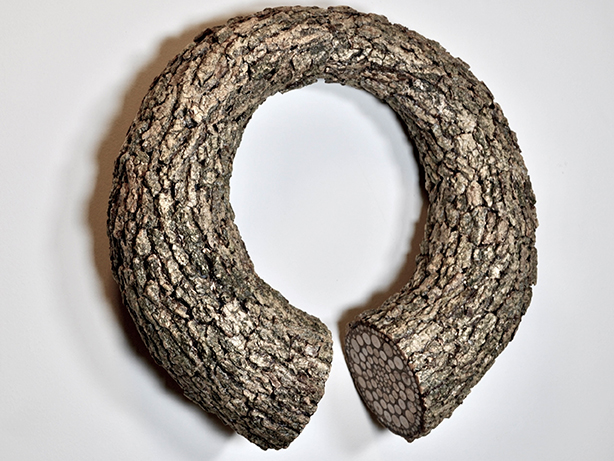
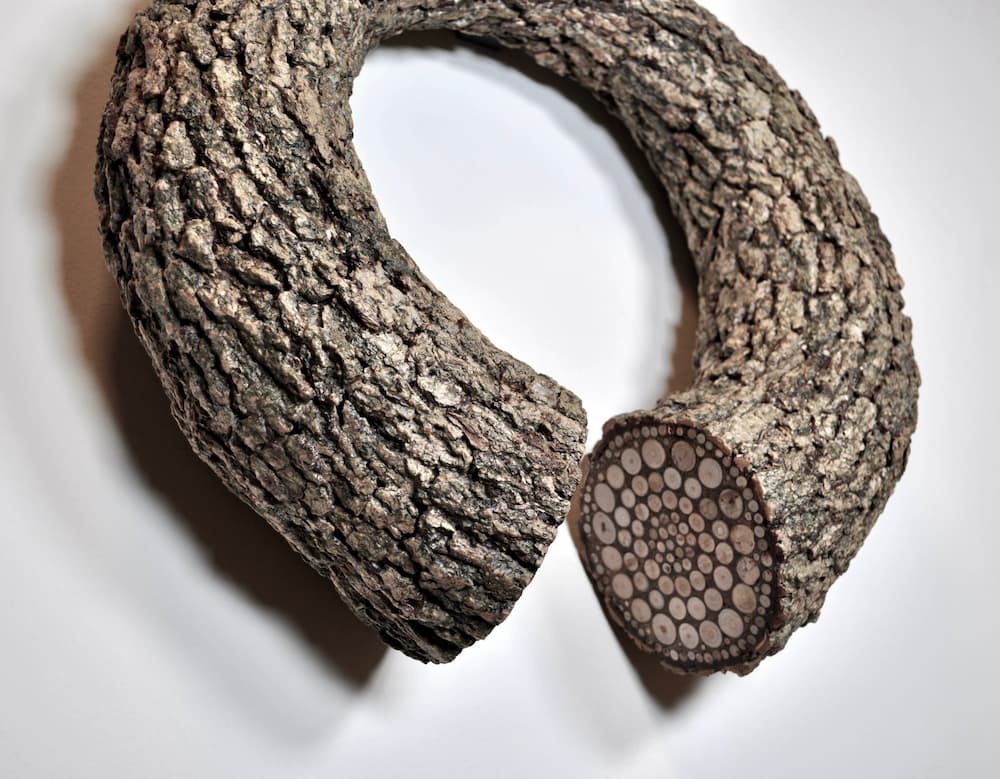
George Lorio, Discontinued, 2022. Found bark attached to constructed wooden armature, 18 1/2″ x 18 1/2″ x 5 1/2″.
Lorio’s piece, Discontinued, earned the second place prize in the Rhythms Exhibition. About this piece Lorio says:
These constructions are fictitious renderings of trees, stumps, and logs. They appear abstracted, altered to pair with other modules to offer the viewer a vision of decay and rebirth on the forest floor: the rhythm of life in the forest. Pattern activates the surface of the forms with cut found twigs or bark alluding to the activity of photosynthesis when sunlight is turned into energy.
When I create a sculpture suggesting a living tree with forest floor detritus, it is a form of incantation-a poetic activity. An antidote to the industrial development that cares more for removing trees, laying asphalt, and erecting concrete buildings than allowing space for a seed to sprout.
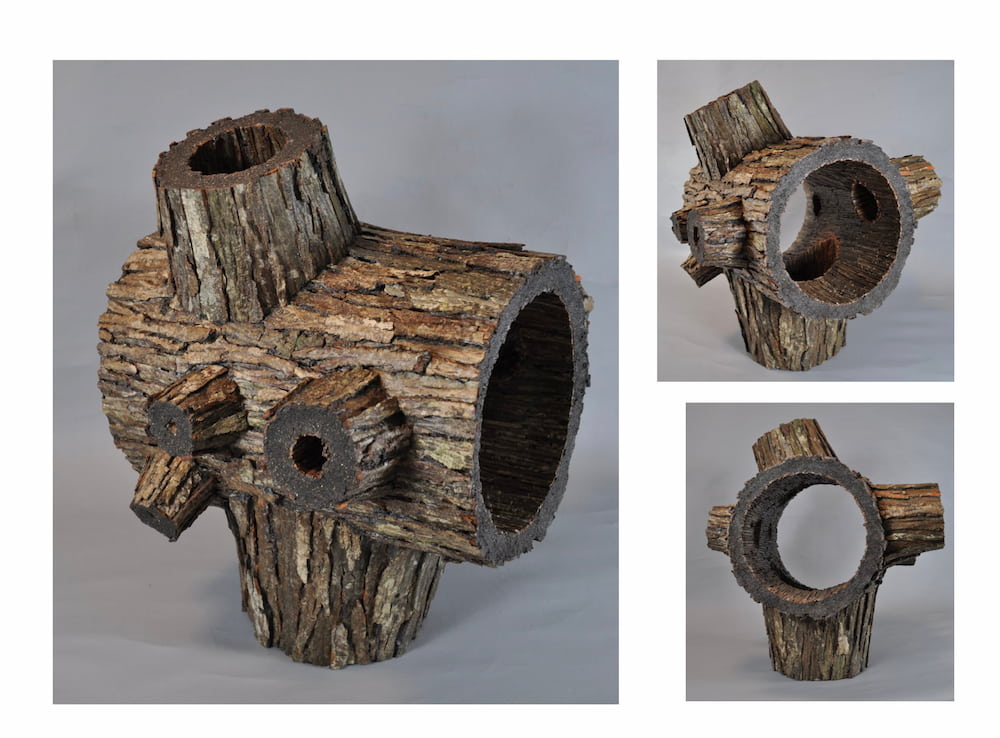 George Lorio, Shell, 2022. Found bark attached to constructed wooden armature, 20” x 15” x 16.5”.
George Lorio, Shell, 2022. Found bark attached to constructed wooden armature, 20” x 15” x 16.5”.
Lorio was born and raised in New Orleans. He attributes his view on life to the extremes (environment, religion, and rituals to cite a few) that exist there. Lorio went on to spend time near the US border with Mexico which, he says,“changed [his] view of contemporary culture and our collective social responsibility.” It was witnessing the collection of drug wars, desperate human circumstances, wealth inequality, and environmental decline that triggered the choice to focus his art on more topical issues. Since then, George Lorio taught for over thirty years at four colleges and universities all while continuing to maintain an active studio practice.
During our chat with George for this blog post, we discussed his undeniable passion for trees. He told us about how deeply he observes, studies, and cares about the relationship trees have with culture, climate change, and the overall environmental systems in which we live. He carefully selects his materials from the areas he frequents, collecting pieces from felled trees and shed limbs as he walks through the woods. He then meticulously joins the collected pieces to create these works of art which encourage viewers to consider trees and their critical role in our environment, culture, and ecosystems more carefully.
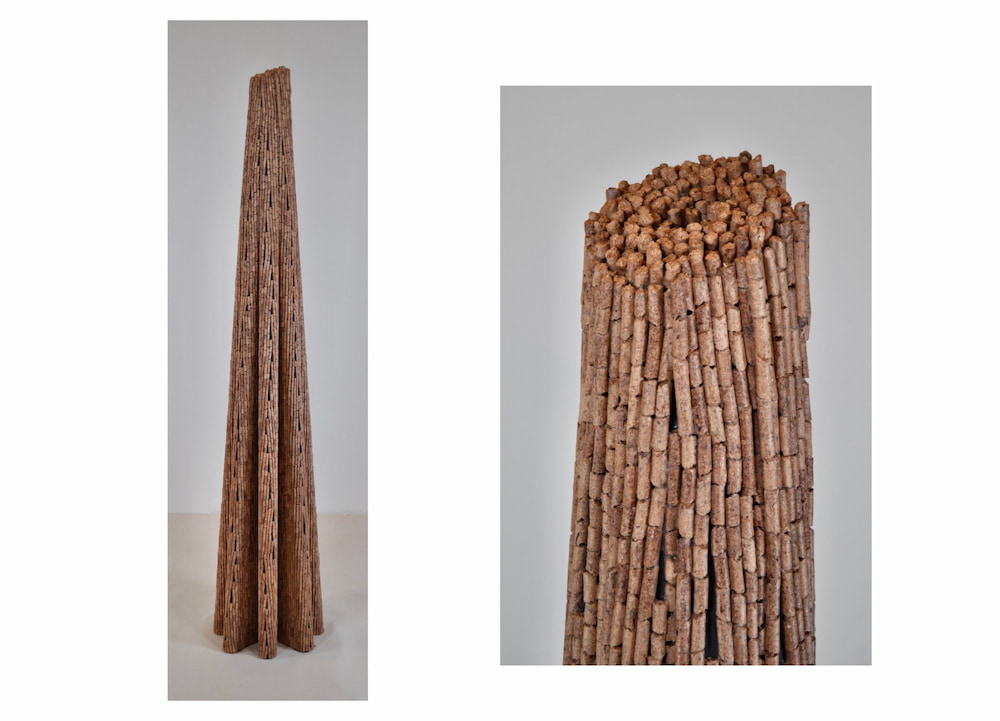
George Lorio, Pelletized, 2023. Manufactured pellets, 61” x 13” x 13”.
Lorio’s reverence for trees runs deep. He recalled to us a time when, driving by felled trees along the side of the road destined for pellet mills, he was compelled to pull over to stop and appreciate them. He referred to this reaction as a “kind of mourning,” going on to say, “If you keep your forests, you keep your air scrubbed, you keep your water clean.”
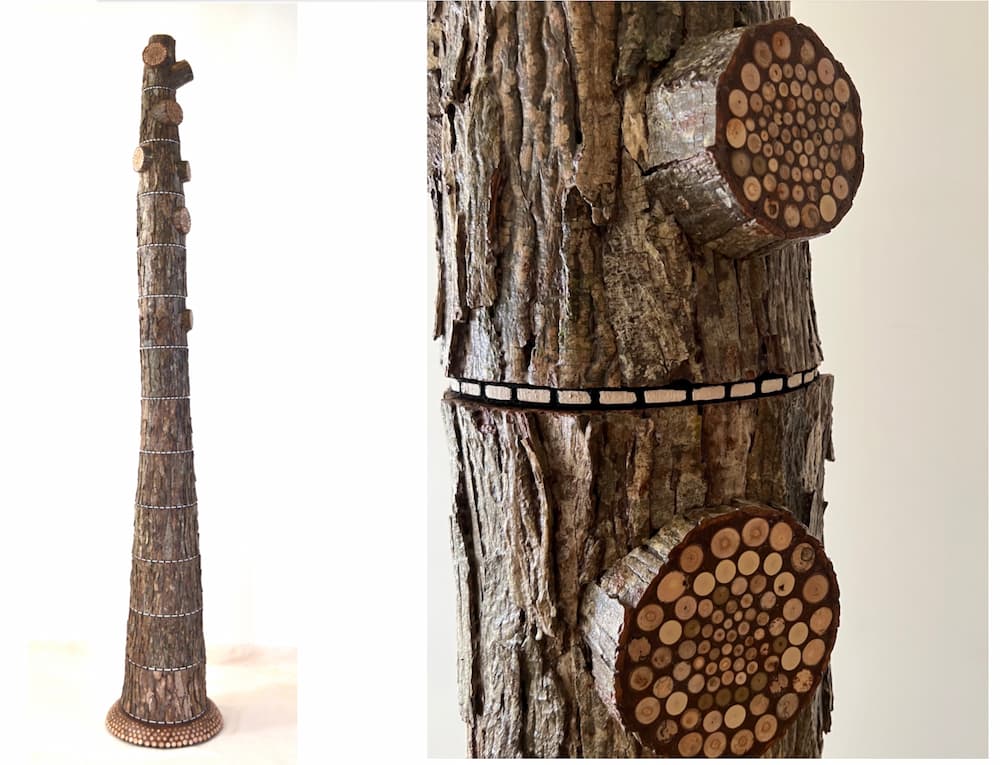 George Lorio, Cut Here, 2023. Found bark mounted on fabricated plywood armature with birch shims, 104” x 18.5” x 18.5”.
George Lorio, Cut Here, 2023. Found bark mounted on fabricated plywood armature with birch shims, 104” x 18.5” x 18.5”.
Lorio also imbues is process with meaning, as he describes in his artist statement:
Derived from the observation and study of felled trees during frequent walks, I employ found twigs and bark from neighboring parks and gardens attached to a constructed plywood armature. I see how the trees are dismembered; how they are allowed to decompose into the ground; how elements of the vertical structure morph into the horizontal ground surface. Within the sculptures, the placement of the cross-cut sticks forms a veneer. The use of found tree bark carries a relevance of materials as I reconstruct the effigies of living entities from the detritus of the forest floor. I enjoy the physicality of materials. I usually do not alter the natural color of the sticks and bark. My process of construction allows for meditation and intuitive problem solving in attaching the surface composed of found matter. After gluing the bark to the constructed armature, I complete the attachment with an overlay of acrylic matte medium. The placement of the cross-cut sticks forms a veneer. Pattern ritualizes the form allowing modifications which embellishes the original observation from which it emerged-the woods. Swirls and concentric curves are apparent, reminiscent of goddess cultural motifs.
Lorio is continuing to work on pieces in the Discontinued series. This year he had a solo exhibition titled Sustainable at International Arts & Artists at Hillyer in Washington, DC. We look forward to seeing future work from George Lorio and are honored to have his piece, Discontinued, in our Rhythms Exhibition.
» Visit Rhythms: WEM’s 30th Annual Juried Woodworking Exhibition online
» Learn and see more of George Lorio’s work on his website
Post written by Larissa Huff, Communications and Social Media Manager
August 2024





